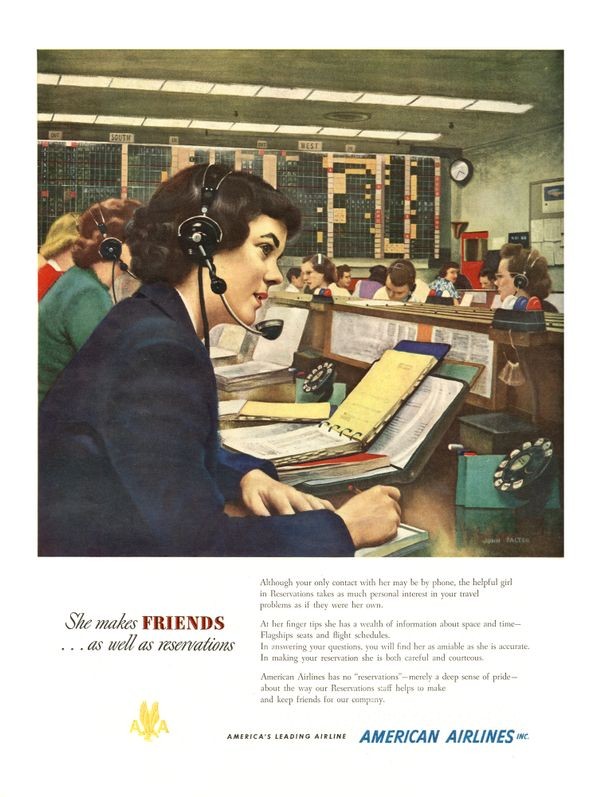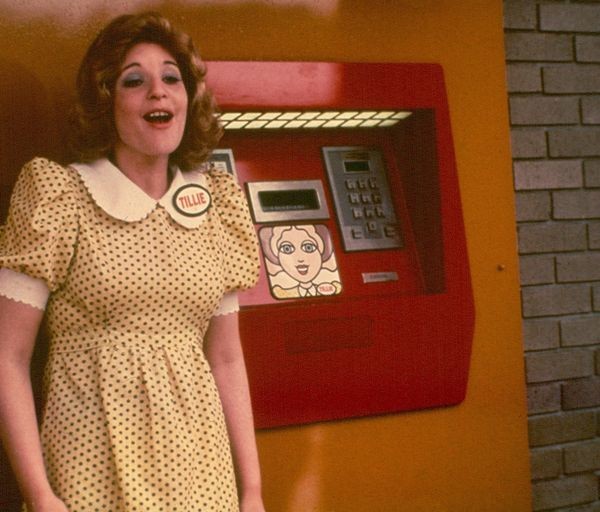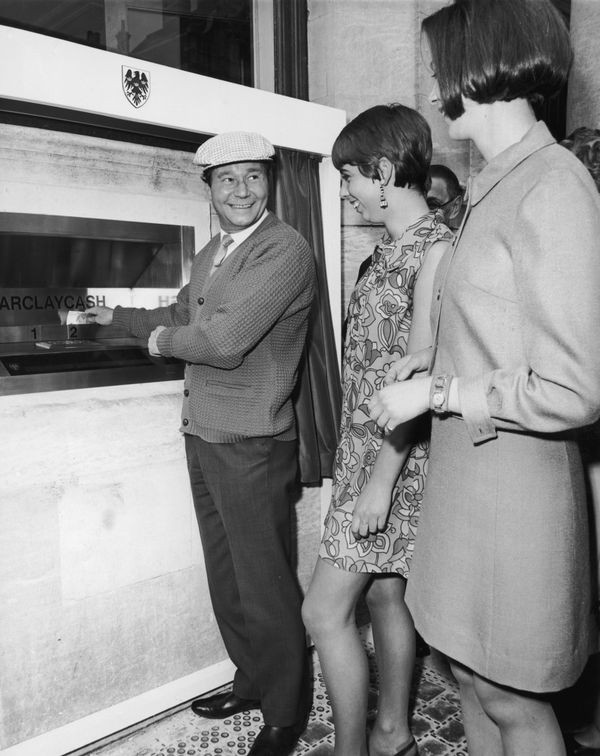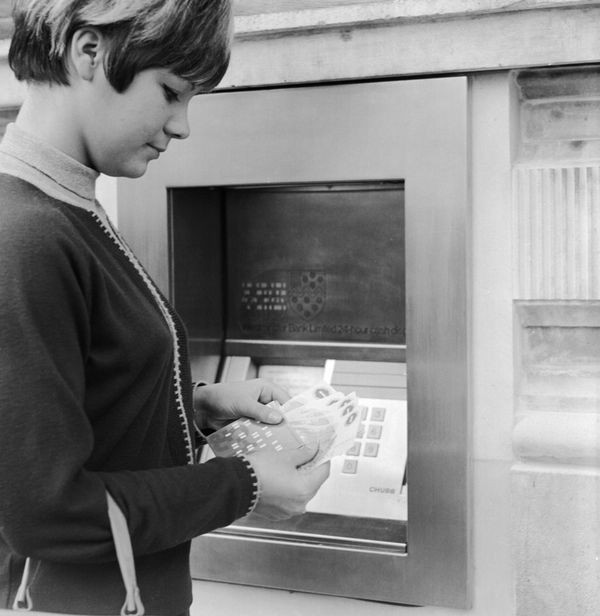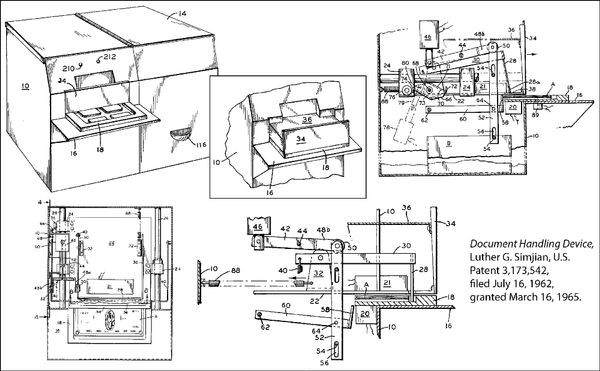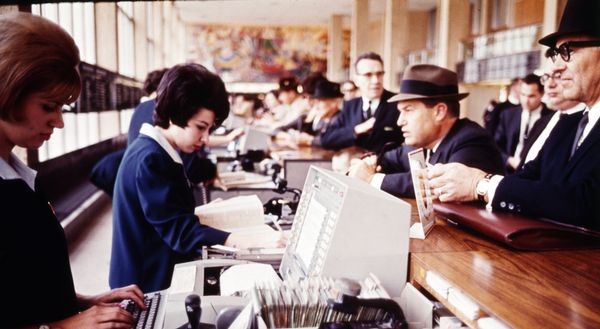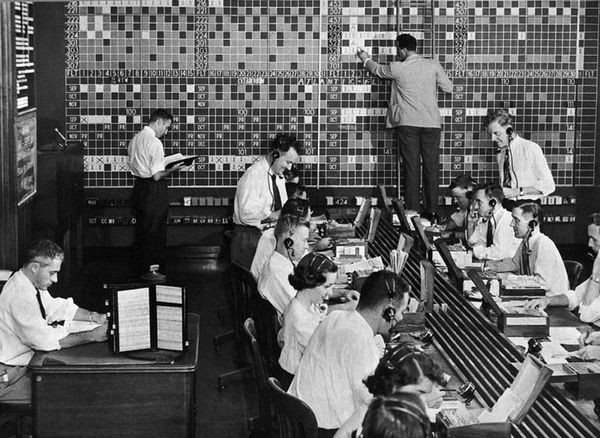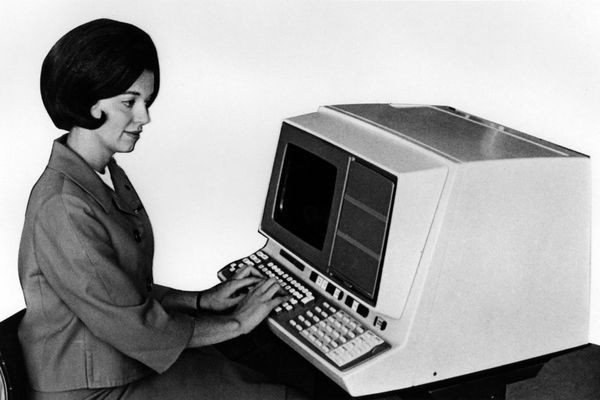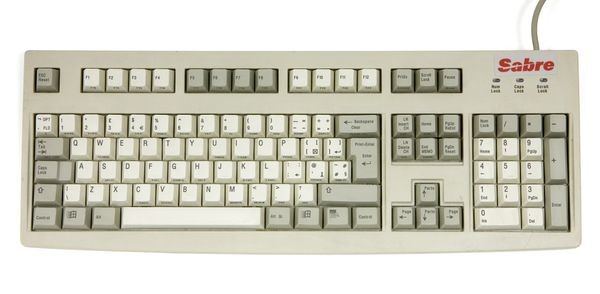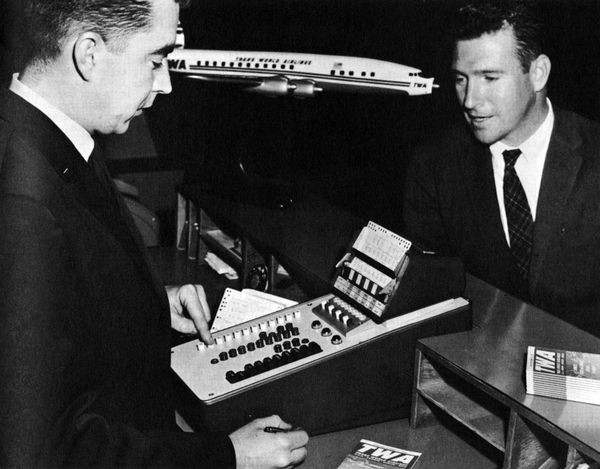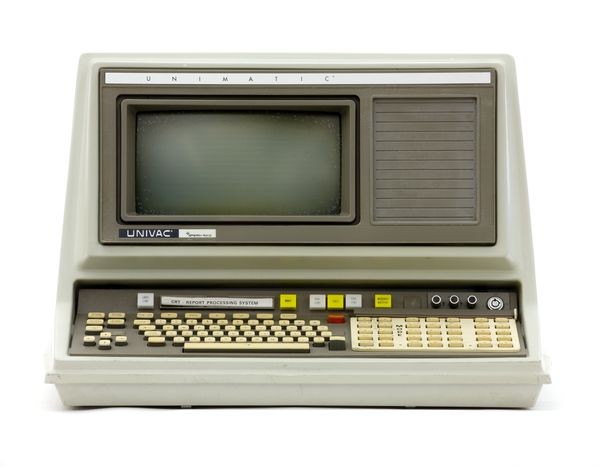Mainframes in Daily Life
American Airlines reservations center
Air travel grew dramatically after World War II. Managing reservations with 1940s technology became increasingly difficult.
ATMs
Computers were great for a bank’s accounting. But how about waiting on its customers?
Luther Simjian patented key parts of a cash-dispensing machine in the 1950s. A prototype was tested circa 1961. Functional ATMs, however, required improvements in real-time computing and database software, which evolved in the late 1960s.
Tillie the Teller
Tillie the Teller was a successful ATM promoter for the First National Bank of Atlanta. An actress who played the fictional Tillie made live appearances.
View Artifact DetailBarclays Bank's first cash-dispensing machine
Barclays used popular British comedian Reg Varney to introduce its first cash-dispensing machine. The machine was invented by John Shepherd-Barron at De La Rue Company, the leading commercial currency printer.
View Artifact DetailAn early cash-dispensing machine in London
Banks had to convince customers that their teller machines were safe and reliable. They didn’t publicize that the paper used by some of the first machines was slightly radioactive.
View Artifact DetailAutomatic Teller Machine (ATM) patent drawings
In the 1950s and early 1960s, Simjian patented the key features of modern ATMs, including real-time deposit verification, document handling and remote communications. But Simjian never successfully marketed an ATM.
View Artifact DetailAirline Reservation
American Airlines pioneered machine-assisted reservations in 1946. Six years later, it joined with IBM to develop a more comprehensive computerized system: SABRE.
Tested in 1960, SABRE took over American’s reservations in 1964. By 2009, SABRE was an independent company making nearly 70 million transactions daily and offering a billion fare combinations.
SABRE, American Airlines' computerized reservation system
SABRE was a joint American Airlines-IBM project. Operational in 1964, it was not the first computerized reservation system, but it was well-publicized and became very influential.
View Artifact DetailPan American World Airways reservation office
In the early 1950s, airlines relied on mostly manual systems to manage reservations.
View Artifact DetailSABRE-labeled keyboard
In 1972, American Airlines converted SABRE to use IBM 360 computers located underground in Oklahoma, and broadened access to include travel agents. SABRE, which became a separate travel-services company in 2000, owns the Travelocity website.
View Artifact DetailAirline agent and early Teleregister ticket terminal
TWA and other airlines were using Teleregister’s computerized “Magnetronic Reservisor” reservation system by the late 1950s. Teleregister started in the 1920s making stock market displays.
View Artifact DetailSABRE promotional button
IBM developed the SABRE reservation system for American Airlines thanks to a chance encounter between the airline president and an IBM salesman on a commercial flight in 1953. Running on dual 7090 mainframes, SABRE was inspired by IBM’s work on the SAGE air-defense system.
View Artifact DetailUNIVAC (Sperry Rand) Unimatic terminal
This is an early terminal from the mainframe-based United Airlines Unimatic System for airline reservations and operations. Unimatic began operating in 1970 and was still in service for operations management as of 2010.
View Artifact Detail